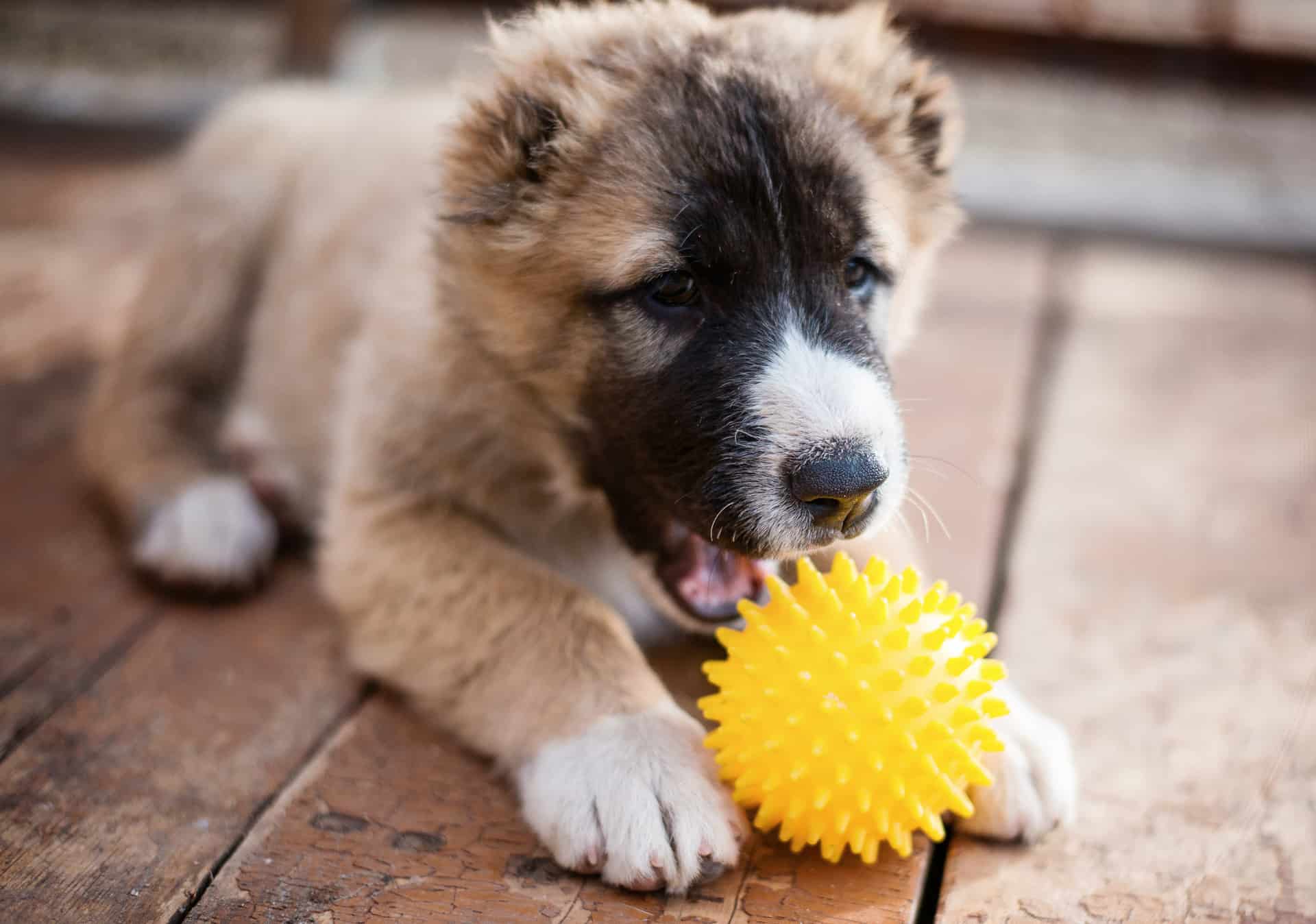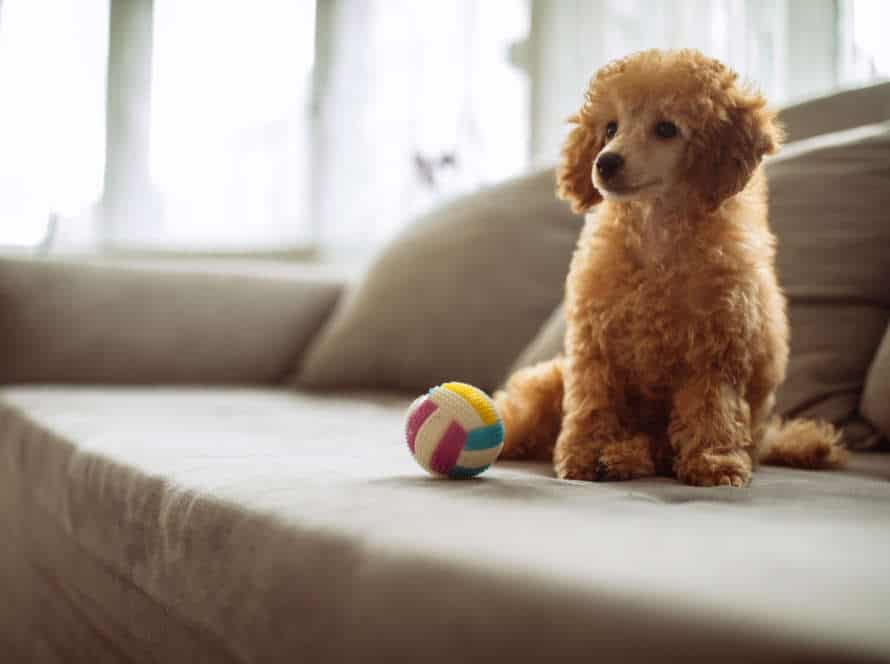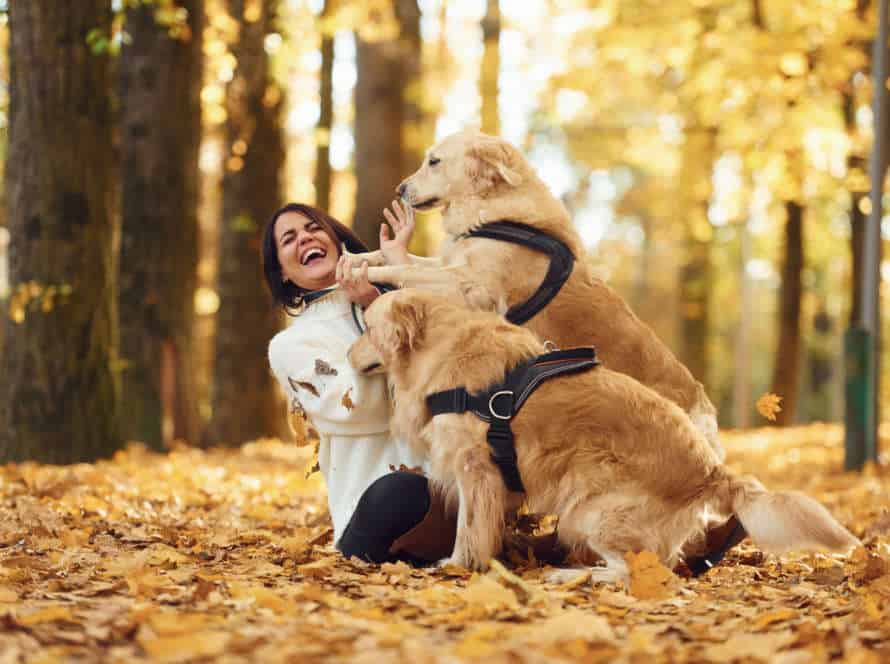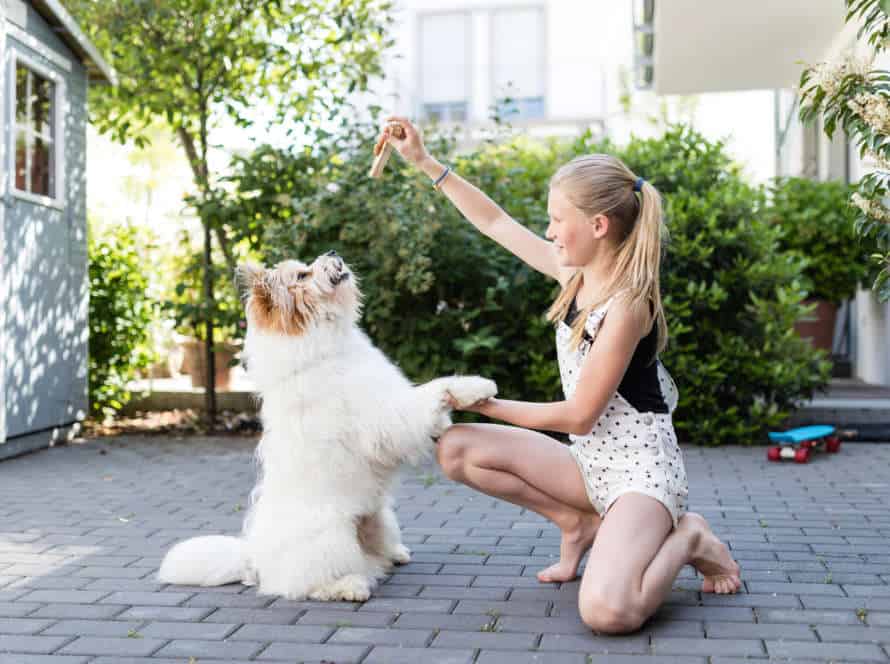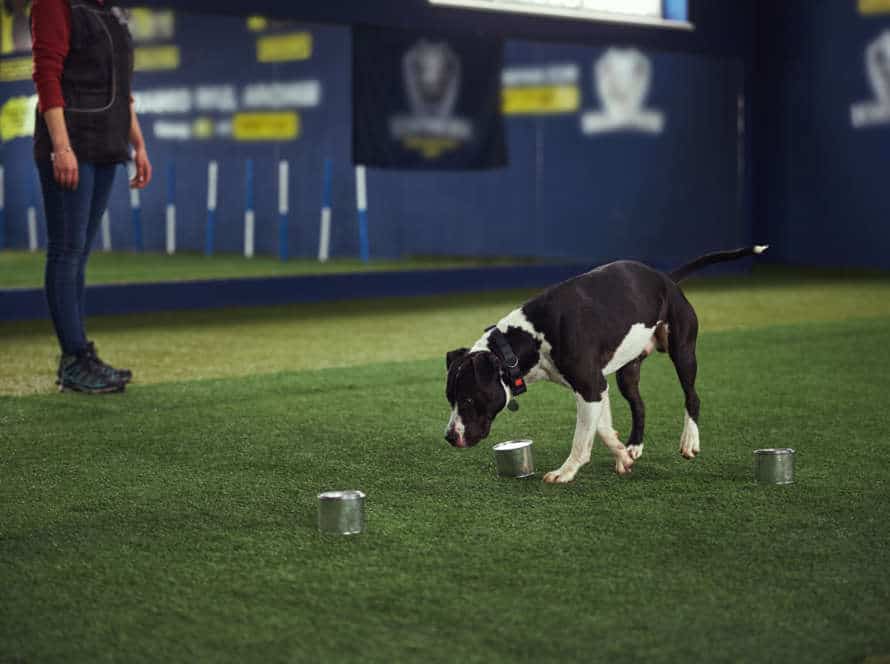Puppies and Fetch: Tips for Safe and Fun Play
Fetch is a great way to bond with your pup, while giving them exercise and excitement. Keep safety and training in mind for a pleasant time for both of you. Here are some tips:
- Start gently: Start with short games and gradually make it longer and more challenging.
- Find safe spots: Look for a fenced space or an open area away from traffic and other hazards.
- Choose safe toys: Pick a soft and durable toy that won’t hurt your puppy or break.
- Teach commands: Teach “fetch”, “drop it” and “leave it” for safe and controlled play.
- End with a reward: Give a treat or compliments when it’s over to encourage good behavior and avoid sadness.
Importance of Safe Play with Puppies
Playing with puppies is an awesome bonding experience. But, safety is key! Here are some tips for safe and fun playtime. Understand safety concerns, keep your pup active and teach them how to fetch. Have a blast!
Differences between adult dogs and puppies in play
Play is essential for pup health. Adult and puppy play styles vary. Here are tips for safe and fun play with pups:
- Avoid activities that could harm pup bones and joints.
- Use soft toys for their teeth and gums.
- Supervise playtime, and intervene if the pup gets aggressive.
- Never let them play with anything small enough to swallow.
- As the pup grows, increase playtime, watching their behavior and physical abilities.
Potential risks with puppies and fetch
Playing fetch is a great, healthy activity for puppies. But, pet owners must be aware of potential risks. These include:
- Joint or bone injuries from jumping and twisting.
- Choking or digestion issues from swallowing or chewing on small objects.
- Overstimulation or aggression from playing too much or too aggressively.
For safe play, pet owners should provide suitable toys and balls. Also, they should supervise the playtime and limit its duration and intensity. It is important to give puppies enough rest and recovery time between sessions to avoid injury and exhaustion. Always keep puppy safety as your top priority – even during playtime!
Benefits of safe play for puppy development
Playing is crucial for a puppy’s growth. Safe play can be of great help to your furry pal’s physical, social and mental development. Plus, it’s a great way to strengthen the bond between you and your pet. Here are some benefits of safe play for your pup:
- Socialization: Safe play helps puppies learn how to interact with other dogs and humans appropriately.
- Physical development: It gives puppies the opportunity to build their muscle strength, improve coordination and balance.
- Mental stimulation: It stimulates their brains and helps them improve problem-solving skills and intelligence.
- Bonding: Playtime with your pup reinforces trust and fondness between you and your pet.
Remember to always supervise your puppy while they’re playing and make sure they have safe toys that won’t hurt them. As well, never leave your puppy unsupervised with toys that can be swallowed or are a choking hazard. Pro tip: Reward your puppy with treats and praise when they play for added positive reinforcement.
Preparing for Playtime
Prepare your puppy for playtime! It’s great for their health. To have a well-mannered pup, lay down some rules. Teach them to obey commands too. Plus, have a safe play area. That way, playtime is more fun and safe. Let’s look into how to ready your pup for playtime!
Creating a safe environment for puppies to play
As a pet owner, it is paramount to make a safe space for your puppies to play. Here are some tips to help you:
- Keep hazardous items away – Get rid of any dangerous things like sharp objects, chemicals and cords from the play area.
- Set limits – Put baby gates up or make a playpen to stop your puppies from going outside the safe zone.
- Pick suitable toys – Choose toys that are designed for puppies, so they won’t choke.
- Train them well – Use positive reinforcement to teach your puppies not to bite or chew on your hands.
- Monitor playtime – Always be around during playtime, so you can stop accidents or bad behavior.
It is important to remember that a secure play environment is beneficial for your puppies’ growth and development.
Selecting appropriate toys for puppies to fetch
Fetching is a great way for puppies to socialize, exercise, and burn energy. It’s essential to pick the proper toy for safe and fun playtime.
Here are tips for selecting the right toy for puppies to fetch:
- Size – Pick a toy that fits your puppy’s mouth size. Don’t get toys that are too small to swallow or too big to carry.
- Durability – Choose a toy that can withstand your puppy’s rough play and chewing. Skip any toys with small parts that can break off and cause choking risks.
- Texture – Pick a toy with a texture your puppy likes. If they like to chew, harder rubber toys may be better. If they prefer to carry toys in their mouth, soft plush toys may be better.
By following these tips, you can make sure your puppy has safe and fun playtime while developing their physical and social skills.
Supervising playtime to ensure safety
It’s critical to supervise playtime to keep your pup protected while they’re having fun. Here’s some advice for secure and entertaining play:
- Pick a safe spot, like a fenced-in yard or a protected inside area.
- Begin with brief play sessions, and gradually increase the time as your pup grows.
- Use gentle, non-toxic toys that are suitable for your pup’s age and size.
- Instruct your puppy to drop the toy on your command to keep away from unintentional nips or swallowing the toy.
- Keep an eye on their movements to stop them from slipping, falling, or tripping during playtime.
- Notice their conduct and reactions. If you notice signs of fear, aggression, or discomfort, quickly end playtime.
By following these tips, you can make sure that your pup’s playtime is secure and enjoyable!
Teaching Puppies to Play Fetch
Teaching pups fetch? Fabulous! It’s one of the best things to do and a great way to get them exercising. But, safety comes first – here are some tips for teaching your pup fetch in a safe and fun way:
- Channel their energy
- Keep them occupied
- Make sure it’s safe
Establishing basic obedience commands
It’s essential to train your pup to follow basic obedience commands. Here’s how:
-
Sit: Hold a treat above your pup’s nose and move it towards them. As they follow the treat, their bottom will lower. Say “sit” when it touches the ground and give the treat.
-
Come: Have a treat ready. Say “come” and when your pup comes, give the treat. Praise them too.
-
Stay: Ask pup to “sit” or “down”, then step back with a stop-sign hand. If they follow you, quickly return and ask them to sit/down again.
-
Fetch: Show pup the ball/toy and say “fetch”. Toss it a short distance and encourage pup to go for it. Praise and give a treat when they return.
Be patient, consistent and use positive reinforcement to promote learning.
Introducing toys and playing
Playing with toys is key for a puppy’s growth. Fetch is a great way to build your bond and help their physical and mental health. Here’s some tips for teaching fetch:
- Start small – begin with tug-of-war or tossing the toy a short distance.
- Use positive reinforcement – praise, treats or belly rubs when they bring the toy back.
- Keep it safe – make sure the toy matches their size and age, and don’t throw it too hard or far.
- Be patient – some puppies need time to learn, so stay consistent and patient.
Using positive reinforcement to motivate
Positive reinforcement is great for teaching puppies to play fetch! It’s fun and safe. Here’s how to use it:
- Introduce the toy. Let your pup sniff and see it.
- Toss it a short distance.
- If they pick it up, give them treats or loving words. This will link the toy to good things.
- If they don’t pick it up, don’t force them. Just wait and cheer them on.
- As time goes on, throw it further. Watch your pup at all times for safety.
Remember: Positive reinforcement should make them feel happy, secure and motivated.
Common Issues and Solutions
Bonding with your pup can be loads of fun with a game of fetch! But there can be a few issues. Here, we’ll talk about common problems and solutions. We’ll give you tips on the right toys and techniques to make sure you and your pup have a safe, enjoyable time. Find the perfect toys and use the right techniques! Enjoy the fetch game with your pup.
Issues with toy possession
Issues with toy possession are common amongst puppies during playtime; frustration and aggression can arise. Here are a few tips that can help make playtime enjoyable:
- Resource guarding: Puppies may guard their toys, growling when someone approaches. Limiting toy access and redirecting the puppy’s focus will help avoid this.
- Fear of the toy: Introduce toys gradually and let the pup interact at their own pace.
- Swallowing toys: Supervise play and choose age and size-appropriate toys.
By following these tips, playing fetch with your puppy can be fun and safe for everyone!
Issues with not bringing the toy back
Fetch with puppies can be tricky. They might not always bring the toy back. But there are ways to fix it.
Reasons why puppies don’t return the toy can be:
- Lack of interest. Use different toys or add treats to make it more fun.
- Fear or anxiety. Make the game stress-free. Reduce noise and distractions.
- Not knowing the game. Play short games. Give lots of praise and treats when they bring the toy back.
As a pet owner, it’s important to understand why your puppy isn’t bringing the toy back. And to make fetch enjoyable and safe.
Issues with excessive barking or chewing
Do you have a pup that barks or chews too much? Don’t worry, it has a solution!
Barking could be because of boredom, anxiety, or wanting attention. So, make sure they are exercised properly to reduce their energy levels. You can also use positive reinforcement techniques to get ’em quiet.
Chewing is a normal habit for puppies who are teething or exploring. Give them squeaky toys, dental chews, or other chewable items to redirect their chewing. Teach them the ‘drop’ command and reward them with treats when they obey.
Always supervise your pup during playtime. Make sure they have safe toys that aren’t too small or cause a choking hazard.
Remember: Consistency and patience are key in training! Set realistic expectations and praise when they do something good.
Conclusion
To wrap it up, playing fetch with your pup is a great way to create a bond and make sure they get enough exercise. You should, however, take some precautions for safety and fun for both you and your pup.
Here are some tips to consider:
- Don’t do too much. Puppies are very energetic but tire quickly. So, keep play sessions to 10-15 minutes.
- Use a soft toy or ball. Puppies have delicate teeth and gums, so avoid hard items that may harm their teeth.
- Select a safe area to play. Be sure there are no risks, like sharp objects or traffic, that could hurt your pup.
- Go with positive reinforcement. Reward your pup with praise and treats when they bring the toy back to you.
By following these tips, you can make sure playing fetch with your pup is a safe and enjoyable experience for both of you.
Frequently Asked Questions
Q: What is the best way to introduce my new puppy to the game of fetch?
A: Start by using a soft toy or ball that is easy for your puppy to pick up and hold. Throw it a short distance and encourage your puppy to fetch it. Make sure to keep the game positive and fun, and stop if your puppy shows signs of fatigue or disinterest.
Q: How can I make sure the game of fetch is safe for my puppy?
A: Always supervise your puppy during playtime and make sure the toys and balls you use are appropriate for their size and age. Avoid using small or sharp objects that could be swallowed or cause injury.
Q: What are some common mistakes to avoid when playing fetch with my puppy?
A: Some common mistakes include throwing the toy too far or too hard, over-exerting your puppy, or playing with objects that are not meant for fetch (such as sticks or rocks).
Q: Can playing fetch with my puppy help with their training and behavior?
A: Yes, playing fetch can be a great way to reinforce positive behavior and training commands, such as “come” and “drop it”. It also provides mental and physical stimulation for your puppy.
Q: Are there any health benefits to playing fetch with my puppy?
A: Yes, playing fetch can help improve your puppy’s cardiovascular health, promote muscle development, and provide mental stimulation that can improve overall well-being.
Q: How often should I play fetch with my puppy?
A: It is recommended to play fetch with your puppy for short periods of time throughout the day, rather than one long session. This will help prevent over-exertion and allow for proper rest and recovery. The frequency of play will depend on your puppy’s age, breed, and overall health.

